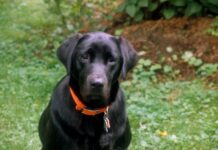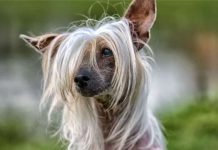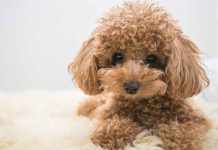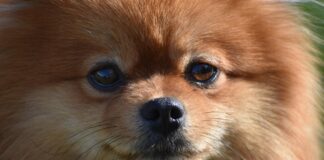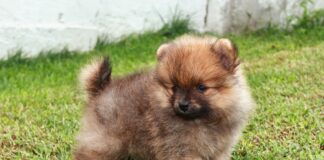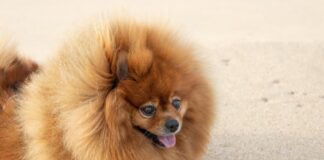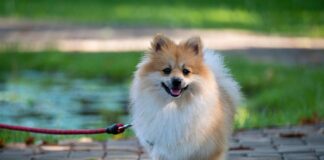Brussels Griffon

The Belgian Griffon is a small Belgian breed of dog that captivates lovers with its interesting face and almost human facial expressions. This breed is classified by the FCI in group 9, the company and companion dogs. Here you can find the Belgian Griffon in section number 3: Small Belgian Dog Breeds.
Origin and breed history
The Belgian Griffon breed goes back to a breed of dog called Smousje, a so-called “Chien babu”, in English “dog with a beard”. This small, wire-haired dog has been found in the Brussels region of Belgium for centuries. Originally, the ancestors of the Belgian Griffon were pied pipers. When the then Queen of Belgium, Marie-Henriette, became aware of the little bearded dog and became interested in the breed, its popularity grew.
Because some breeders eventually wanted the Smousje to be smaller and more agile, these Pugs, Ruby King Charles Spaniels and Affenpinschers crossed them, resulting in the Pug-like face typical of the Belgian Griffon. Due to their courage, which at first glance nobody would suspect from their small body size, the Belgian Griffons were used from then on as watchdogs during transports by carriage. Due to their handy size, they were easy to take with you and could still effectively guard the loaded goods.
Nowadays there are three different variants of this dog breed, which differ only minimally from each other. The only differences are in the length and texture of the fur. Variant one, the Brussels Griffon, has a wire-haired, red coat. The Belgian Griffon, on the other hand, comes in a dark robe and is usually black or black with beige markings and also has rough hair. The third variant, the Little Brabant, can have both black and red fur. In contrast to the other two variants, however, it is short-haired. All three of these species can be crossed with each other, but the rough-haired and short-haired breeds are usually separated in order to obtain the different coat structures.
Nature & Temperament of the Belgian Griffon
The Belgian Griffon is a very attentive and friendly dog, which is very attached to its caregivers and is very actively and demandingly looking for physical proximity to its people. He is generally considered to be intelligent and docile, but should also be brought up well because of this, otherwise he likes to go his own way. He is also friendly and open-minded towards children, which is why he is well suited as a family dog. His curiosity coupled with his innate alertness also make him a good watchdog.
The Belgian Griffon is rather unaware of its small body size. His courage is not inferior to that of a big dog and he meets his environment very self-confidently. He knows how to assert himself against his peers, but does not tend to be aggressive. In addition, he is very socially compatible and gets along well with other dogs living in the same household.
What kind of character does a Belgian Griffon have?
The Belgian Griffon is very bright and curious and also very people-oriented. He needs to be close to his people and is suitable as a watchdog due to his vigilance.
The appearance of the Belgian Griffon
This breed of dog is very reminiscent of the pug, which is among its ancestors, with its head and especially the shape of its nose. In terms of size, the Belgian Griffon is between 20 and 30 cm at the withers, with a fully grown, healthy dog weighing between 3.5 and 6 kilograms, depending on its size.
The physique of this dog breed is quite compact and can be described as rectangular, its body length usually corresponds to its height at the withers. He has a broad chest and a particularly expressive head. The upper part of its head is broad and the forehead is prominent. The nose is short and directed upwards. The wide chin is also curved upwards. Typical of the Belgian Griffon is the facial hair, which is disheveled and rough and sticks out from the face and is reminiscent of a beard. The eyes of this breed are very large, dark and round with long lashes. The small ears are attached to the side of the head and are folded down to hang down. The back-bred snout can lead to a slight underbite. The lower jaw is pushed further forward than the upper jaw. The tail of this breed is carried upright, a tail curled over the back is considered a breeding fault.
The coat colors and the hair structure vary depending on the variant of these dogs, from black to black with beige markings to red tones, all colorings are represented. Most dogs have wire-haired coats, but there are also some representatives with short-haired, smooth coats. The rough-haired fur is half-long and particularly dense and frizzy, which makes it very easy to care for.
Training & husbandry of the Belgian Griffon – this is important to note
Due to its small size and the fact that this breed has little urge to move compared to other dog breeds, the dogs are well suited to being kept in the home. The connection to its people is important for the Belgian Griffon. He is very sensitive to the moods of the people around him and always up for a good cuddle.
The intelligence of this breed paired with the very own head requires a thorough and patient education. In general, however, the Belgian Griffon is a dog that wants to please and tries to fulfill the tasks assigned to it in the best possible way within the scope of its possibilities. He also loves to play puzzles, it doesn’t matter whether they take place indoors or outdoors. The priority is to keep these clever little guys busy and mentally busy. Of course, the Belgian Griffon also wants to get its daily amount of exercise, but it does not need any sporting units or long walks. It is also not suitable as a partner for sports such as jogging or cycling.
Due to its family friendliness, its people-oriented nature and the low demands on its keeping, the Belgian Griffon is well suited as a dog for beginners. Due to his clever nature, however, it is advisable to get a professional individual trainer on board or to attend a dog school until the basic elements of training are in place.
Diet of the Belgian Griffon
Due to its small stomach, the Belgian Griffon tends to require small portions, which are fed more frequently throughout the day. There is specially developed food for small dog breeds, which is adapted to the small mouths in terms of its composition and also has the necessary nutrients and minerals.
Whether dry and/or wet food is fed or whether the dog is cooked for himself is up to each owner. However, it is fundamentally important that the selected food is of high quality in order to ensure that the dog is kept as healthy as possible. When it comes to feeding, it’s always a good idea to talk to your dog’s veterinarian. Based on the state of health, age and other important factors, this person can best assess what and how much food your dog needs to be well.
Belgian Griffon – Activities and Training
The Belgian Griffon does not require a lot of exercise, and sports activities can even become dangerous due to the frequent breathing problems. Comfortable walks are enough for this breed.
On the other hand, they are very easy to get enthusiastic about mental games and find them a lot of fun due to their pronounced intelligence.
Good to know: Peculiarities of the Belgian Griffon
A special feature is the Belgian Griffon’s almost human-looking facial expression, from which every mood can be read and which always provides entertainment.
It is also good to know that dogs of this breed can almost exclusively be brought into the world by caesarean section. This is due to their rounded skull, which makes a natural birth impossible as it does not fit through the bitch’s birth canal.
The special relation to humans and his sometimes almost obtrusive nature make this breed a special kind of cuddly dog that is reluctant to leave your side.
English Toy Spaniel
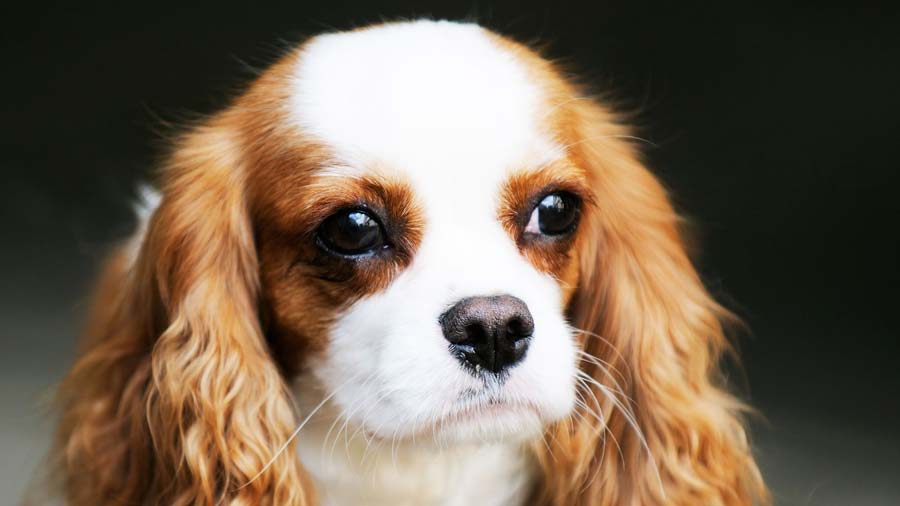
The King Charles Spaniel (English Toy Spaniel) is a happy, affectionate, playful, and calm dog that wants to be your best friend and loves to snuggle up in your lap. He is very attached to his owner. He needs a lot of attention and affection and cannot be left alone at home. In turn he is very sweet and loving and will do anything to please you. Likes to be around people and can be very shy around strangers at first. But he makes friends very quickly with other people. Since he is a gentle dog, his training sessions should be carried out calmly and not strictly. At times he can be very stubborn and possessive, but generally well behaved King Charles Spaniels are not and are very obedient. He is not a good watchdog because he does not usually bark much and is often shy and reserved. He gets along well with other pets and dogs. It is an ideal play partner for children. As with many other dogs, he does not like being teased or teased and may snap in fear. He doesn’t have much energy and it’s enough for him to play in the house or in the garden. He should always be leashed when walking, as he has a great hunting instinct and will hunt for smaller birds and animals. He can often be very picky about food and will not always eat the meal he is given. He sheds quite a bit of hair and should only be kept in a household where vacuuming a few times a week is not a problem.
This is what the English Toy Spaniel looks like
The Cavalier King Charles is 32 to 34 cm tall and weighs up to 6.5 kg. Its fur is slightly wavy, long, and silky.
Tips for care
Its field should be brushed regularly so that the fur does not become matted and no foreign bodies such as sticks or grass get stuck in the fur for a long time.
Origin
King Charles Spaniel (English Toy Spaniel) is usually descended from the pug dog, which originated in China or Japan. In the Middle Ages, the Charles Spaniel came to Europe and became very popular there during the reign of King Charles 2nd of England. Nobles in particular held this breed very affectionately. It was often mistaken for hunting small animals and birds.
Maltese

Maltese dogs are considered an affable dog breed that is also suitable for beginners and older people. The little four-legged friends are clever, and playful and enchant their favorite people with their sunny disposition.
How long Maltese dogs have been around has not been definitively clarified, but it is believed that the dog breed is one of the oldest in Europe. Excavations at the tomb of Pharaoh Ramses II provided evidence that at least ancestors of the Maltese lived in ancient Egypt 1,300 BC. Dog statues made of natural stone showed great similarity to today’s specimens.
Maltese dogs are not from the island of Malta
What is certain is that Maltese dogs do not originate from the island of Malta, as the name of the dog breed would suggest. The name has its origins in the Semitic word “màlat”, which can be translated as port and refuge. This resulted in the adjective “maltais” and various place names for islands and cities in the maritime region, for example the name for the Adriatic island of Méléda and the city of Melita in Sicily. The origin of the name of Malta also comes from there – so there is at least an indirect connection between her and the small Maltese dogs.
Dog breed used to be used as mouse hunters
The reason why the dog breed has a maritime name is that Maltese dogs used to be common in harbors and coastal towns. Their job there was to drive away mice and rats. The Maltese only became a companion and companion dog during the Renaissance in the 15th and 16th centuries, when it was mainly kept as a lap dog. It kept fine ladies company and also had a less honorable task: due to its higher body temperature, it attracted fleas, which in turn did not pester its owner.
Maltese dogs do not like to be alone
Fortunately, nowadays it no longer has to serve as a “flea magnet”, but the Maltese dog has retained its attachment and philanthropy over the centuries. However, this means that Maltese dogs bond strongly with their favorite people and feel sad when left alone.
They like to be with everyone, which fortunately is usually easy to do thanks to their small size and friendly disposition. The little four-legged friends are often skeptical at first towards strangers and appear distant. They then need a little time to warm up and decide whether they find the unknown biped sympathetic.
Maltese don’t raise themselves
Maltese dogs have not retained much of their original area of use as mouse hunters – their hunting instinct is very weak or hardly developed at all. Additionally, because they were and are bred to be companion dogs for people, they are very open to working with them. This makes raising the Maltese comparatively easy. However, this does not mean that this breed does not need training and is naturally well-behaved – its representatives are still just normal dogs. Maltese dogs can easily bark if they are not properly trained, especially at strangers. You should therefore teach your four-legged friends important commands and clear rules about what they are allowed and not to do right from the start.
Dog breed is playful, intelligent and eager to learn
The joy of learning and intelligence of the Maltese make it much easier to train him. He is also very playful, so you can not only teach him the most important commands, but also tricks. While the little dog doesn’t need long walks and physically demanding sporting and training sessions, they do appreciate activity that is appropriate to their abilities. Comfortable walks with breaks from playing – both with people and with fellow dogs – and dog sports that demand his intelligence are ideal for him.
Maltese dogs are hardy and long-lived
With good care, Maltese dogs can live 15 to 18 years. They are considered to be less susceptible to diseases typical of the breed – only patellar luxation can occur and the eyes are somewhat sensitive. Make sure you groom your Maltese daily and pay the groomer an occasional visit.
Pekingese
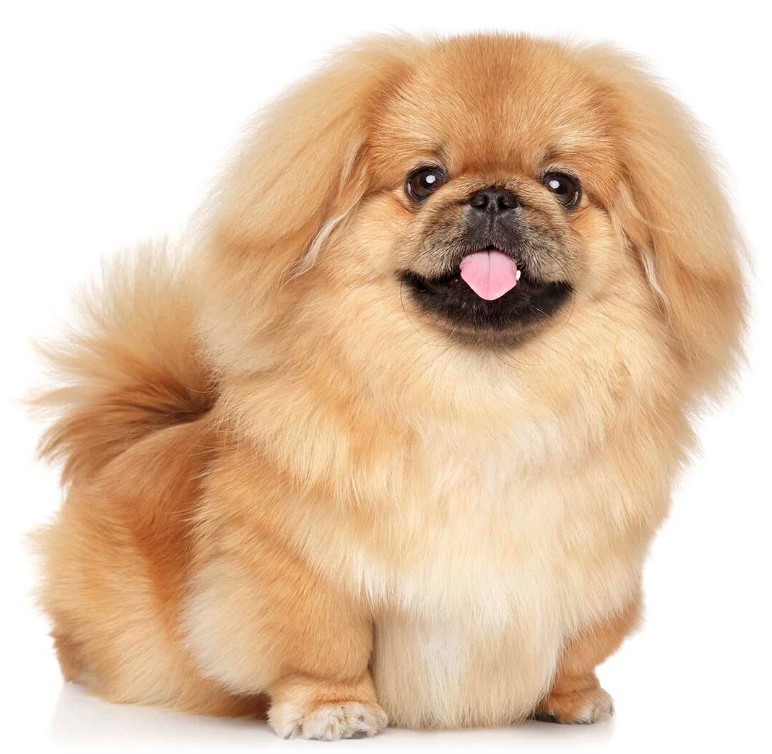
The Pekingese used to be reserved for the Chinese rulers as a palace dog and was nicknamed the lion dog. These small, big-headed dogs are very alert and intelligent and make loyal companions to their owners. They are good for single people because they form an intimate bond with a single person. However, the pretty Chinese are also headstrong and determine when it is time to cuddle and when not.
Palace Guards in the Chinese Empire
The Pekingese has a centuries-old tradition and was highly valued by the Chinese rulers as palace guards. According to legend, the little four-legged friend even served as a companion dog for Buddha and turned into a lion in case of danger. The courageous dwarfs came to Europe in 1960 – as booty of the British in the Second Opium War. They quickly became very popular and were recognized as a breed by the British Kennel Club in 1898.
The Temperament of the Pekingese
Pekingese have been used to accompanying humans for centuries. They like to fixate on a single reference person, whom they love dearly. The animals are self-confident and choose their own friends. A certain stubbornness is part of the nature of four-legged friends, who like to decide where to go or when to cuddle.
The small dogs are extremely alert and will strike immediately if a stranger appears. However, they aren’t usually the barkers, they’re just more alert watchdogs. Once a Pekingese has taken a liking to its owner, it makes a wonderful companion.
Breeding and keeping of the Pekingese
In any case, the unconventional Pekingese needs good socialization and should attend puppy lessons and a dog school. Loving and consistent leadership is necessary, otherwise he uses human weaknesses to his advantage. However, once the little dog has accepted you as a leader, it shows itself to be docile and attentive, and training is then quite easy.
The Pekingese is not a particularly active companion and is well suited as a companion dog for older people who can no longer walk long distances. He also gets along well in a single apartment in the big city, as long as he is sufficiently busy and can do his daily sniffing rounds outdoors. The Pekingese likes to be occupied with hidden object games and toys. He may also enjoy clicker training. What he doesn’t like at all is the hustle and bustle. Loud music, visiting the Christmas market or other events with lots of people are not for the sensitive dog.
Care of the Pekingese
You have to groom the dog’s long coat every day with a comb and brush. More intensive brushing is called for, especially when changing fur. In addition, the animals tend to have elongated claws, which you should check regularly.
Features of Pekingese
Unfortunately, this breed is affected by overbreeding. The often extremely short snout and the large protruding eyes lead to breathing problems and inflammation of the eyes. Some animals also do not have an intact gait. In the meantime, obviously sick animals are no longer allowed to be bred. The fur must also no longer be excessively dense and long.
Russian Toy

The Russkiy Toy is a Russian dog breed that has only been recognized by the FCI since 2006. He carries the FCI standard number 352 and belongs to group 9 “Company and Companion Dogs” and to section 9 “Continental Miniature Spaniel”. Based on its origin, it is also known as the Russian Toy, Russian Miniature Spaniel or Moscow Long-Haired Toy Terrier.
Origin and breed history
The Russkiy Toy’s ancestors are the English Toy Terriers, which were very popular in Russia. From 1950 onwards, toy terriers were increasingly bred in Russia, but also with mixed breeds and animals without a pedigree. Breed standards other than English Toy Terriers were established and Russian Toys gradually emerged.
At first only short-haired toys were bred and only from 1958 long-haired toy terriers were bred. This new variety was given the name Moscow Long-Haired Toy Terrier. The two varieties were later combined under the name Russkiy Toy and then accepted as a separate breed by the FCI in 2006.
In this country, the little four-legged friend is not very well known, but its fans are constantly increasing. He has therefore been bred in Germany since 2010 and is cared for by the Association of German Small Dog Breeders. Since then, there have been around 30 litter reports from short-haired Russian Toys and around 50 from the long-haired variety every year. Mixed breeds with this breed are rather rare.
Essence and character of Russkiy Toy
The little lap dog is very cheerful and lively. He is curious and open – even towards strangers. The lively Russkiy Toy always wants to be a loyal, affectionate companion for its owner. Despite his tiny size, he is fearless and barks like a terrier to report everything that he is not comfortable with. He also tends to bark when he’s bored. You have to try to keep the barking under control through consistent training, otherwise you will quickly have an annoying bark at home.
The little fellow is by no means aggressive; he also gets along well with other pets and children. Since the four-legged friend is very playful, children will enjoy him. It’s best to let him grow up with them from an early age.
The nimble Russian toy spaniel has a very spirited character, just like its terrier ancestors. Therefore, you should not necessarily let him run without a leash. He loves running around, being busy, playing with children and everything that drives away boredom. This also includes the passionate digging of holes in the garden, much to the chagrin of its owners.
If the toy wants attention, it likes to demand it by barking continuously. As with all dogs, consistent training is therefore very important for the small toy. And no matter how dazzlingly charming he exudes with his innocent little eyes, one should steadfastly insist on following an order. Otherwise, the little one quickly rises to become the leader of the pack.
How big do Russkiy Toy dogs get?
They have a shoulder height of 20 to 28 cm, ideally 25 cm. There is no big size difference between males and females.
The appearance of the Russian Toy
As small dogs, Russkiy Toy males and females have a height at the withers of 20 to 28 cm, ideally 25 cm. Their bodies are as long as they are high. They weigh around 2.3 to 3 kg (highly recommended by animal rights activists).
The Russian Miniature Spaniel comes in short and smooth hair as well as long and smooth hair, possibly slightly wavy. The fur is dense and shiny. The long-haired Russkiy Toys have long fringes on their ears. Likewise, long hair adorns their legs behind, their paws and the medium-length sickle or saber tail. Unfortunately, the tail is still docked in some countries, which is forbidden in this country. Coat color varies from black with tan, less often brown with tan, blue with tan, fawn, cream to red in all shades. The four-legged friend can also be two-tone, grained or spotted. Strong colors are particularly desirable. They wear their nose to match the color of their fur.
The Russian Toy Terrier’s body is small, adorned with thin bones and muscles, elegant and supported by high legs. The long, triangular ears are quite large in relation to its head. His small body paired with the pointed snout and big dark round eyes really make him look like a little stuffed animal.
The Russian Toy looks a lot like a roe deer or miniature pinscher. It is also often confused with a Chihuahua, which can be about the same size and weight as the toy. However, the Chihuahua is not related, but a Mexican pedigree dog, which can also be tinier, making it the smallest dog breed in the world.
Upbringing and keeping of Russkiy Toys – This is important to note
The lively four-legged friend must be well socialized and trained from an early age. So he should go to dog school. There he comes into contact with larger and smaller dogs and also learns obedience. If there are many “dog pupils”, the smaller dogs will definitely be separated so that they don’t “get lost” with the really big ones. Masters and mistresses can also exchange helpful experiences with other dog owners and trainers during the lessons at the dog training ground.
In any case, the Russkiy Toy should be trained consistently so that it gets to know its limits and its place in the pack. This is the only way to eliminate unloved characteristics, such as barking. The four-legged friend can sometimes be stubborn if his little head doesn’t have his way. You should always raise him carefully and lovingly and not overwhelm him. If there are children in his pack, they must take his tiny size into account. This means that you should be careful with the petite fellow when playing and not injure him. Small children in particular could easily mistake the toy for a toy.
Furthermore, you should also regularly brush your teeth, brush your ears, clean your ears, train the “veterinarian in an emergency” and the like with the puppy. It is also important to practice retrieval early on. Because the toy with the terrier genes sometimes has a temper when running free and doesn’t come back at the first call.
Nutrition of the Russkiy Toys
The four-legged friend is not particularly demanding when it comes to his food. Because of its tiny size, it only needs a small amount of it. Some pet owners forget this, so that the toy sometimes becomes overweight. It is therefore urgently necessary to observe the recommended feeding quantity, which can always be found on the packaging of ready-made food. Treats should be included. Well-intentioned, delicious food from the table should never be given to the toy.
Because the Moscow Toy Longhair is so small, it burns more calories than larger dogs for its weight. Therefore, he should receive high-quality special dry food for smaller breeds. This contains all the important nutrients that tiny four-legged friends need, and most importantly, the kibble is extra small for tiny teeth. Good dry food contains enough animal protein, has no preservatives, colorings, sugar or flavor enhancers and only a small amount of grain. In this way, health problems such as allergies can be avoided. Cold-pressed dry food is preferable, as vitamins and nutrients are better preserved in it. If you opt for wet food for smaller breeds, then you should only buy small cans or bowls that you can feed freshly all the time. The toy should always have fresh drinking water available. In addition, adult Russkiy Toys should be fed once or twice a day at fixed times after they have been let out.
Puppies should be fed a special puppy food ideal for their growth three to four times a day. The amount of food should also take into account factors such as the fur nose’s age, state of health or activities. Senior dogs, for example, need less food than agile young dogs who practice dog sports. It is best to carefully switch them to a mini senior food.
Russkiy Toy – activities and training
The little fellow is not very demanding, but needs his exercise like all dogs. One hour a day is enough for this. He also likes games that kill boredom. For example, you can let him look for dog toys or fetch them. Because of its small size, this can also be done at home in the apartment. The docile toy also likes to learn little tricks and also takes part in one or the other dog sport. If you decide to do dog sports, you should take a course specifically for “tiny dogs”. Trick dogging or agility, for example, are suitable. With trick dogging, the fur nose learns various tricks that it is supposed to perform in response to an acoustic signal. This requires a high level of concentration. In agility, the dog runs through a course with hurdles, hoops, bridges, tunnels, and the like. All sports should primarily be fun for the little ones and of course, keep them busy.
Since the toy spaniel can suffer from heart failure, it should not have too much stress from dog sports and be able to recover extensively afterward. After every activity, the Russkiy Toy is happy if it can take a long break at home and be scratched and cuddled.
Yorkshire Terrier
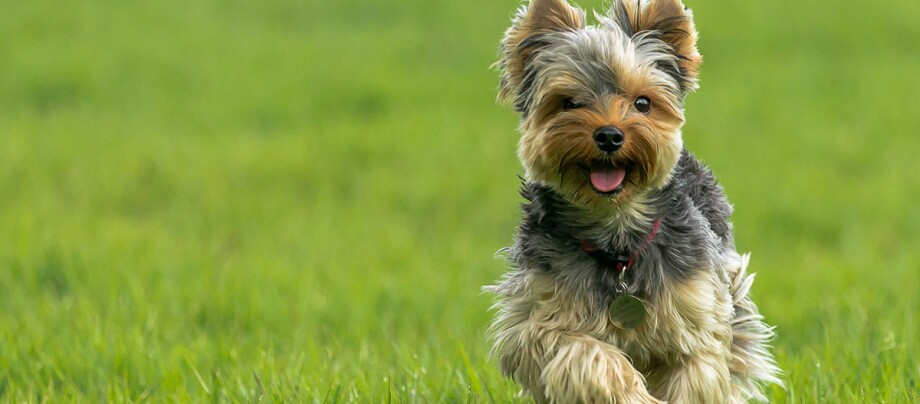
Mini dog breeds enjoy great popularity when a small apartment does not allow large dogs. Yorkshire Terriers are at the forefront of choice. The shaggy coat of hair, petite build and strong ego create a contrast that many cannot resist. Nevertheless, the character of the dog is not entirely simple. You can find out everything you need to know about the Yorkshire Terrier here.
The Yorkshire Terrier belongs to FCI Group 3 of Section 4 “Dwarf Terriers”. Group 3 includes all terrier breeds in the world.
Origin and breed history
Today’s Yorkshire Terrier is much smaller than its ancestors. The four-legged friends were significantly larger several centuries ago. The terriers, also known as Yorkies, originating from Scotland and the north of England, could weigh up to six kilograms. At least that is what records from old documents show.
At that time there were no genetically separated terrier breeds. A single gene pool was dominant, which the terriers from the earlier working-class settlements appropriated for themselves. Initially, the Yorkshire Terrier did not lend itself to the working class. Rather, he was considered a lap dog in the house and at court. Only with the beginning of industrialization did he become a permanent member of the many poor households in the workers’ settlements.
The dwellings of the settlements were small. Accordingly, families could only get a small dog. In addition, the former lap dog turned out to be a watchful and useful companion of humans. They chased away rats, mice, martens and even foxes. In order to protect their own plumage, the dog owners used the family member in a targeted manner. The animal also contributed to the maintenance of life. The short legs were fast enough to kill a rabbit.
The useful little helper today is much more than that. The breed was officially recognized in 1873 by the Kennel Club. In Germany, those who are interested will find entries from the beginning of the 20th century. However, the Yorkie only became well known in the 1970s.
The Yorkshire Terrier is different from the Biewer Terrier. The Biewer Terrier’s coat is multi-colored: gold, black and white.
Nature & Temperament of the Yorkshire Terrier
Dog connoisseurs describe the little dog as robust and self-confident. The potential dog owner should not underestimate the rather small stature of the shaggy looking four-legged friend. If this dog breed is untrained, the bold appearance often wins. The owner quickly forgives the terrier’s often extremely perceived overconfidence. This is because of the cute appearance. In addition, the animal likes to be pampered. Today he doesn’t function as a hunting dog. The return to the lap dog is more in line with reality.
The playful behavior is particularly easy to observe when the little one knows that it is in the protected environment of its mistress or master. The strength of the small body seems irrefutable. Large dogs are often the target of the somewhat belligerent show-off.
In addition to the boastful dog muzzle, the Yorshire Terrier has a lot of intelligence. He knows how to use it well to get what he wants. If you neglect a resolute leadership and training of the dog, you will quickly see that the limits have been exceeded.
Despite the grandiose personality, the Yorkshire Terrier is suitable as a family dog if the family members know how to deal with the character traits. The prerequisite is that the extremely stubborn behavior is liked and respected by the owners. This is especially necessary when the little dog needs a break after big performances and wants to withdraw.






